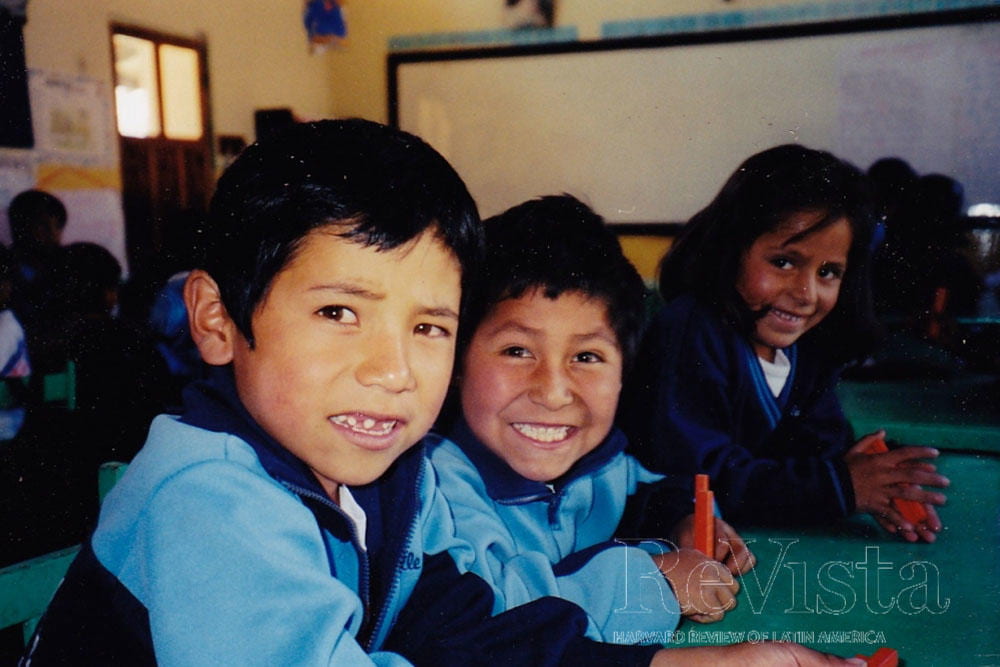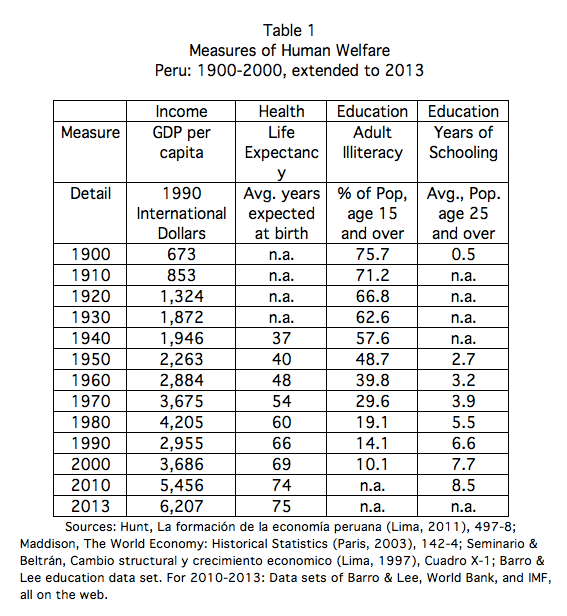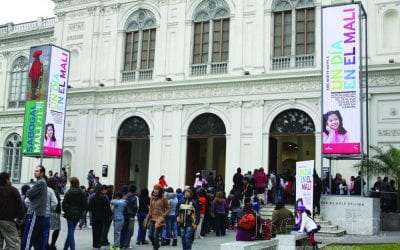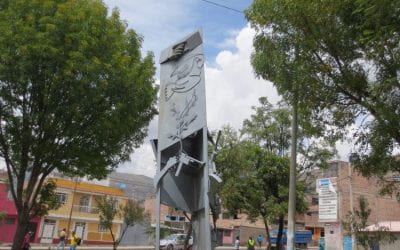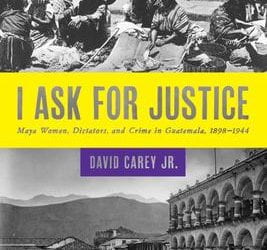Seeking Progress in Twentieth-Century Peru
What the Numbers Show

Barbara Hunt (far right) with two teachers from the one-room schoolhouse in Ancash in 1967. Photo courtesy of Shane Hunt.
The year was 1993. My wife Barbara and I had just arrived in Lima, with the intention of working there for two or three years. I had a job in a USAID project, while my wife was part of a World Bank planning group in the Ministry of Education.
Peru was just recovering from staggering blows, both economic and political. On the economic side, the country had endured a ruinous hyperinflation in the last years of the 80s, followed by the tough stabilization program of August 1990, the “Fujishock.” This stopped the inflation but also plunged the country into a deep depression from which it was just creeping out in 1993.
On the political side, the country had been battered by two guerrilla insurgencies that amounted to civil war. The war against the more dangerous of the two groups, Sendero Luminoso, is largely remembered as a war in the Sierra, but Sendero was also tightening the noose on Lima. It was strong enough to shut down the nearby town of Chosica (in a “paro armado” (armed strike)), cause frequent electricity blackouts and detonate bombs, including one devastating car bomb in Miraflores, in the heart of Lima. Under such stress Peruvian democracy cracked, and a coup d’etat, Fujimori’s autogolpe of April 1992, redrew the political landscape. An even more startling change occurred with the capture of Abimael Guzmán, Sendero’s “Presidente Gonzalo,” in November 1992. Quite suddenly, the war ended.
When we arrived in Lima just 10 months after this last event, Peru was peaceful once again, but it was battered. Incomes were low, jobs were scarce. Public sector services had been degraded in many areas: roads were full of potholes; clinics lacked dressings and bandages; teachers had fled an educational system that could pay them only $90 per month. Those teachers who remained did so only in the hope of future pensions. To put food on the table, they had to work at second or third jobs. We talked to many of them as they drove taxis.
Measures of educational achievement didn’t exist in those days, but it was well understood that the quality of Peru’s public schools had declined. Some of Lima’s public schools used to be good, Peruvian friends would remark. Now none was good. Furthermore, the prospects for educational improvement seemed very limited. My wife had a special vantage point of the inner workings of the Ministry of Education at that time—she was the only North American working there—and her stories of bureaucratic dysfunction were astonishing. Moreover, this was not just a gringa view. The other three members of her planning group—all Peruvians—saw it the same way.
Our dinnertime discussions at times became very dispiriting. We had known—and loved—Peru for thirty years. In that time—1963 to 1993—data showed that income per capita had not increased one iota. And the educational system had no doubt deteriorated with little prospect for recovery. Had nothing improved in Peru in the time we had known it?
I could answer this grim question with just two positives. First, health conditions had improved. I was vaguely aware of data showing that life expectancy had increased substantially. Second, we were both witness to the extraordinary improvements in elite-level university education. These two points were, however, little more than footnotes to the general thesis that Peru had passed through thirty turbulent years without much to show for it. Our perspective in 1993 was not very different from that of Mario Vargas Llosa’s protagonist in his 1969 novel, Conversación en la catedral, who kept asking, “When did Peru mess up?” (The unexpurgated original is “Cuando se jodió el Perú?”)
A few years later, I started work on a project estimating quantitative measures of progress, or the lack of it, for Peru and other countries of Latin America, for the full course of the 20th century. These numbers would have done much to inform our dinner conversations of 1993, and perhaps they would have helped answer Vargas Llosa’s question of 1969. But even numbers cannot provide a clear answer, since we will find a half-full glass.
So what do the figures show for Peru in the 20th century? The table on p.15 gives some answers for three dimensions of human welfare: income, health and education.
Clearly the 20th century was not without substantial progress in all three dimensions. But how good was this progress compared to that of other Latin American countries? And was it good enough for Peru to catch up, even partially, with a developed country such as the United States?
Trends in Health
Among these three sectors, health gives us the most reliable measure for assessing progress. Life expectancy directly measures the length of life, but it also serves as a proxy for health status during life, because various studies have shown that people who live longer are healthier while alive.
Unfortunately we lack Peruvian life expectancy estimates for the first four decades of the 20th century, because such measures derive from census data, and Peru didn’t conduct a national census during that period. However, for the years that we do have—1940 to 2000—Peru’s life expectancy bore a stable relationship to the Latin American median. It was two years lower in 1940 (37 years to the Latin American median of 39 years) and also two years lower in 2000 (69 years to 71 years).
In 1900 the Latin American median life expectancy was only 29 years. So Peru’s life expectancy was almost certainly less than 30 years and may have been as low as 27 years.
It is hard to imagine today how primitive health conditions must have been in 1900 to produce such a low life expectancy. The figure is some 15 years lower than that of the poorest African country today (Sierra Leone at 45 years). It is also some 20 years less than the comparable figure for the United States, which was 48 years in 1900. From this squalid beginning, however, Peru passed through a revolution in health conditions during the 20th century, as did all of Latin America. Progress was most rapid in the decades near mid-century, and came more from improvements in public health conditions than from delivery of better medical services.
By century’s end, in 2000, the gap between Peru and the United States had closed to about eight years (69 for Peru, 77 for the United States), and continued to close in the early years of the 21st century. By 2012, Peru was only four years behind the United States (74.5 to 78.7), and the United States itself was falling behind many countries. Three Latin American countries had exceeded the life expectancy of the United States in 2012 (Chile, Cuba and Costa Rica, all at 79 years), and 31 other countries had life expectancies in excess of 80 years, the leader being Japan at 83 years.
Trends in Income
For income, we would like to have a measure that reflects trends in the material consumption of “ordinary people.” What we actually have over the century is gross domestic product per capita. This is of course not the same thing, but we maintain some hope that the measure we want and the measure we have move together over time, so that percentage changes would be similar.
Our principal source for historical data on GDP per capita in Peru and in Latin America is the database developed by Angus Maddison and his associates at the Organisation for Economic Cooperation and Development (OECD). Considering first comparisons with the United States that extend over the centuries, Maddison’s data show a long relative decline of Latin America that began as early as the 18th century. In round numbers, Latin America’s GDP/capita was even with the United States in 1700, only half that of the United States in 1820, and only a quarter in 1870. Then for a full century (1870-1973) Latin America held steady with the United States in relative terms, its GDP/capita at 27-29 percent of the U.S. figure. In a more recent period, 1973-2000, Latin America’s relative position fell further under the burdens of the debt crisis. Thus by 2000 Latin American GDP per capita was only 21 percent that of the United States.
In trends in GDP per capita as in life expectancy, Peru’s experience in the 20th century was similar to that of Latin America as a whole. Latin America’s average annual increase in real GDP per capita over the century was 1.7 percent. Peru’s was also 1.7 percent, both these figures being slightly below the 1.9 percent registered by the United States.
Over shorter periods, however, Peru’s experience was quite distinctive. It was a very high-growth country during the first three decades of the century (3.6 percent annual per capita growth as compared to 1.8 percent for Latin America), but it was battered during the last quarter of the century. From 1973 to 2000, Latin America’s growth was only 1.0 percent per year, but Peru’s was -0.3 percent. That is, it was getting poorer. Among other Latin American countries, only Venezuela fared so badly over this recent period. IMF data show that Peru’s per capita GDP peaked in 1981, and that the country did not recover to that level until 2005.
Thus the gloom at the dinner table in 1993. Yes, the Peruvian economy grew substantially over the 20th century, but the growth was so erratic that it was possible to pick out a span of thirty years—as from 1963 to 1993—where there had been no growth at all.
What we did not know, of course, was that Peru’s recovery would be so strong and so sustained in the early 21st century. Beginning in 2002, Peru entered a period of extraordinary economic growth that has not yet ended. Annual per capita growth picked up to 2 percent, then 3, then 5, then 6 percent, and topped out at 8.1 percent in 2008 before dropping back somewhat. For a while, Peru was the third-fastest-growing country in the world, after China and India. The annual average for the first decade of the new century was 4.0 percent.
A growth rate like this can of course close the gap with the United States or any other rich country. But it needs to be sustained for a couple of decades more to make a real difference. In 2013 Peru’s per capita GDP was 20 percent that of the United States. This is up from the low point of 13 percent registered in 1990 and again in 2000, but still below the 27 percent figure of 1929.
Trends in Education
We have two indicators for educational progress, both obtained from self-reporting in censuses. Both have particular strengths and weaknesses.
The strength of the illiteracy rate, for the population aged 15 and older, is that it’s the only educational measure included in the censuses of the early 20th century. Its most obvious liability is its incompleteness as a view of education. Literacy is only the first rung on the educational ladder.
The other measure of educational attainment is average years of schooling for the adult population, generally for ages 25 and over. Its strength is that it reflects education at all levels, not just the first few years that produce literacy. Its weaknesses are two. First, it makes no allowance for differences in the quality of education in different school systems. Second, it was introduced into census questionnaires only around mid-century. The first half of the 20th century is a blank.
Regarding literacy, Latin America began the 20th century with a largely illiterate population and ended it with a largely literate population. In numbers, the illiteracy rate declined from 69.1 percent in 1900 to 44.6 percent in 1950 and to 13.3 percent in 2000. The corresponding figures for Peru were 75.7 percent, 48.7 percent and 10.1 percent. Thus Peru was slightly worse than the Latin American average in 1900, slightly better in 2000.
Adults are seldom able to become literate if they have missed the chance to go to school as children. The century-long decline in the illiteracy rate is therefore a reflection of expanded access to primary education, in the more developed countries like Argentina and Uruguay at the beginning of the century, then in most other countries of the region, Peru included, around mid-century.
The literacy gap with the United States certainly closed during the century, but this gap is rather artificial, because the educational standard being measured is so basic. No country can exceed the maximum of 100 percent, and many, the United States included, essentially reached that ceiling a long time ago. Even as the gap has closed, self-reported literacy data have seemed less and less relevant to the educational demands of modern economic life.
Regarding years of schooling, although Peruvian data are lacking for the first half of the century, we can make an educated guess about 1900 simply because so high a percentage of the population had had no schooling at all. The average years figure must therefore be close to zero. We assign a figure of 0.5 on the basis of comparisons with Mexico, for which a 1900 estimate is available. Also available is a 1900 estimate for the United States: 6 years.
As the U.S. figure for average years of schooling grew from 6 in 1900 to 8 at mid-century and 13 at its end, so did the Peruvian figure grow from 0.5 to 2.7 to 7.7. Thus the gap remained fairly constant at 5 or 6 years of schooling.
Two factors suggest, however, that Peru is closing this years-of-schooling gap very effectively. First, in the last two decades since 1990, Peru’s decennial increase in years of schooling has been twice that of the United States. Second, among developed countries the United States is an overachiever in terms of schooling. In 2010, when Peru’s years of schooling figure was 8.5, the comparable figures were 9.1 for the United Kingdom, 9.3 for Italy, and between 10.3 and 10.4 for Denmark, Finland and France. Thus Peru will soon be caught up with several of the world’s developed countries.
Looming like a dark cloud over these advances in years of schooling is the matter of quality. Quality differences do not affect comparisons of income or of life expectancy. No argument exists holding that an extra dollar of income or an extra year of life is somehow worth less in Peru than in the United States or other developed countries. But strong evidence suggests that each extra year of school attendance in Peru produces less academic advancement than does an equivalent year in the United States. In the most recent PISA exams, which measured academic proficiency of 15-year-olds in 64 countries, Peru finished dead last in all three areas: reading, math, and science. Only eight Latin American countries participated in the test, however, and none did very well. The best, Chile, ranked 50th. The most recent UNESCO-sponsored study of student achievement in Latin America (SERCE, 2002-2008) secured the participation of 16 countries, and Peru ranked between 9th and 11th on the various tests for 3rd and 6th graders. Peru is therefore close to the middle of the Latin American pack. The quality problem in education is not just a Peruvian problem. It is a Latin American problem.
Final Word
Reflecting again on the dinner-table conversations of 1993, I believe that we weren’t wildly off the mark, but we were too pessimistic. This statistical review has shown health progress to have been strong, income growth erratic but promising, and educational progress strong on quantitative measures, but with the quality issue not yet effectively addressed. The glass is at least half-full, but not fully full.
Fall 2014, Volume XIV, Number 1
Shane Hunt is Professor Emeritus of Economics at Boston University and an Associate at DRCLAS. He estimates that his periods of residence in Peru add up to about nine years.
Related Articles
The Violence of the VIP Boxes
English + Español
In Peru, the upper class does not like to mix with those they consider different or inferior. Their maids on the beaches south of Lima are not allowed to swim in club pools and, sometimes, not even in the ocean. The VIP boxes at sports and theater events maintained by the government are a public display of a private practice that reproduces in the public sphere the worst aspect of private hierarchical structuring.
Peace and Reconciliation
English + Español
Eleven years have gone by since the Peruvian Truth and Reconciliation Commission presented its final report. The report reconstructed the history of many cases of massacres, tortures, murders and other serious crimes. At the same time, it contributed an interpretation of the…
I Ask for Justice: Maya Women, Dictators, and Crime in Guatemala, 1898–1944
On May 10, 2013, General Efraín Ríos Montt sat before a packed courtroom in Guatemala City listening to a three-judge panel convict him of genocide and crimes against humanity. The conviction, which mandated an 80-year prison sentence for the octogenarian, followed five weeks of hearings that included testimony by more than 90 survivors from the Ixil region of the department of El Quiché, experts from a range of academic fields, and military officials.

